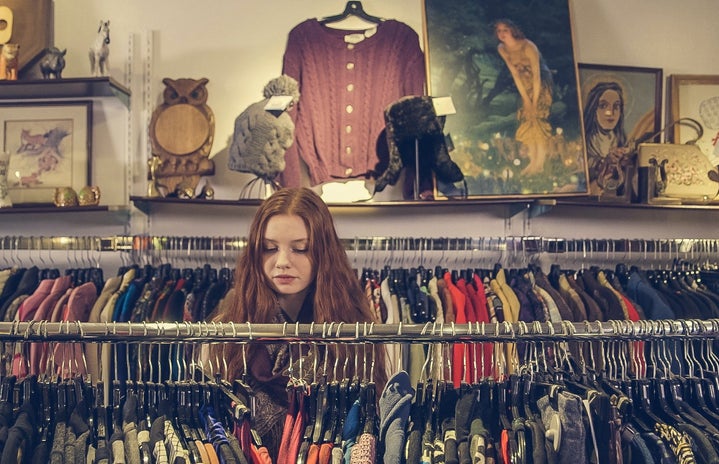Climate change is an immense issue that affects the whole planet. The fast fashion and textile industries are major contributors to greenhouse gas emissions. In addition to holding these corporations accountable, reducing individual carbon emissions is a great way to help the state of the world. Though making a difference on your own might seem impossible, that is far from the case.
There are plenty of ways to reduce your carbon footprint in style, and it starts with opening your closet door.
- Start With Slow Fashion
-
Trends are always changing, and stores like Forever21 and Shein are quick to provide customers with trendy clothes at a dirt-cheap price. However, with the quick turnaround comes tons of factory emissions and wasted fabric. Also, though these clothes are trendy now, they tend to quickly lose their appeal. By supporting more slow fashion and sustainable brands you ensure that you will not only be buying fewer clothes but what you do buy will last you much longer. When it comes to your wardrobe, one that emphasizes quality over quantity not only will help you keep track of your clothes, but also will help to reduce your carbon footprint. Most sustainable brands can be on the pricier side, however, there are tons of alternatives you can choose to save some money (like thrifting!).
- Thrifting
-
Thrifting is a great way to breathe new life into old clothes. Thrifting also helps to keep millions of pounds of clothes out of landfills each year. Not only is it an inexpensive and environmentally friendly way to build your closest, but it’s also a fun activity to do with friends. Moreover, when you want to clean out your closet, donating to thrift stores can help you to save some money and help someone else find an amazing piece of clothing. When thrifting it is also important to consider the people who rely on thrift stores. Try to limit yourself to a few fun pieces and leave some of the more essential or “oversized” items behind.
- DIY Your Closet
-
Have an old shirt that doesn’t spark the same joy that it once did? Upcycle it! Using whatever sewing skills (or lack thereof) you have, you can make some amazing things to make your closet look like new! You can also dye, cut, bedazzle, or tie old clothing to turn it into something new. This will prevent even more clothes from entering our landfills, and allow you to show off your creativity in the process.
- Try a Capsule Wardrobe
-
The capsule wardrobe trend has been growing recently, proving that you can still look fashionable even with a few pieces of clothing. A capsule wardrobe consists of about 20-30 items of clothing (including tops, pants, skirts, dresses, shoes, jackets, etc), many of which are staples that can be used in tons of different outfits. Not only does a capsule wardrobe help to keep your closet clean, but limiting the number of clothes you buy per season will help to reduce fashion waste. A capsule wardrobe proves that you don’t need to sacrifice fashion in order to be sustainable.
- Limit Express Shipping
-
Shipping is a major contributor of greenhouse gases into the atmosphere. Companies lure you in with the prospect of sending you your items as soon as possible and in return end up wasting resources and sending an avoidable amount of emission into the air. If given the option, you should request that your order be shipped all in the same box. Additionally, when companies receive orders which they must ship out quickly, they often send out delivery trucks only partially full. As a result, they need to send out more trucks overall, sending more emissions into the atmosphere. Slower shipping, though less convenient, is an easy way to reduce emissions and hold companies accountable.
Reducing individual emissions can be so daunting, but it does not need to be! Choosing just a few methods from this list, or some of your own creation, are simple ways to make a difference while looking fashionable in the process. Every little bit helps!


